Kani is one of the most popular ingredients in sushi. It is a type of crab meat that has become a staple in many sushi rolls and dishes. However, not everyone is familiar with what kani is and how it is used in sushi. In this article, we will explore what kani is, the different types of kani sushi, the ingredients used in kani sushi, and how it is prepared.
Kani sushi is a type of sushi that is made with crab meat. There are different types of kani sushi, including nigiri sushi, maki sushi, and temaki sushi. The preparation of kani sushi is simple and requires attention to detail. The ingredients used in kani sushi vary depending on the type of sushi roll and the chef’s personal preferences.
Overall, understanding what kani is and how it is used in sushi is essential for sushi enthusiasts and those who are new to sushi. Whether you are looking to make your own sushi at home or want to try out different types of sushi rolls at a restaurant, knowing what kani is and how it is used can help you make informed decisions.
Key Takeaways
- Kani is a type of crab meat that is used in sushi.
- There are different types of kani sushi, including nigiri sushi, maki sushi, and temaki sushi.
- The ingredients used in kani sushi vary depending on the type of sushi roll and the chef’s personal preferences.
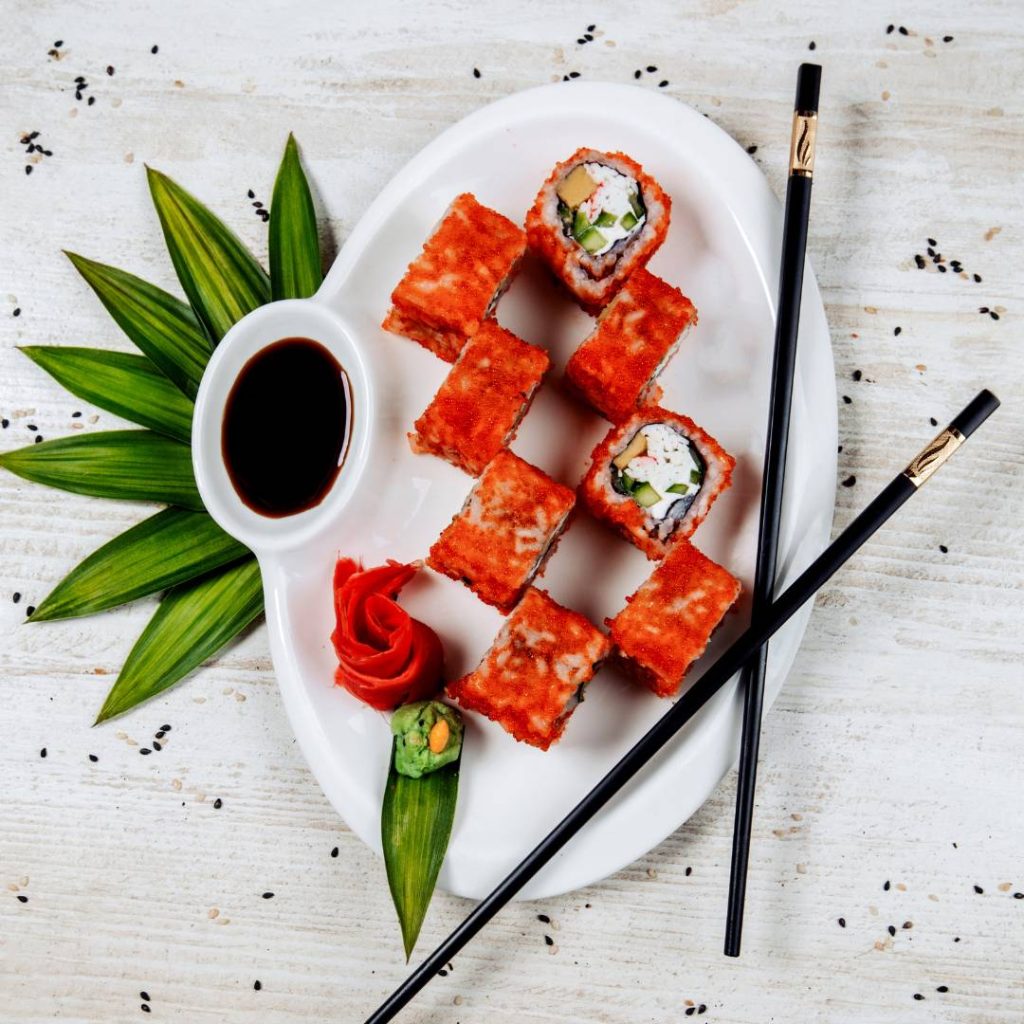
What is Kani in Sushi
Kani is a Japanese term that means crab. In sushi, kani refers to crab meat that is used as a filling for sushi rolls or as a topping for nigiri sushi. However, it is important to note that not all kani sushi contains real crab meat.
In many cases, kani sushi is made with imitation crab meat, which is a processed seafood product made from white fish that has been flavored and colored to resemble crab meat. This is often referred to as “kanikama” or “surimi” in Japanese.
Kani sushi is a popular delicacy in Japan and around the world. It is often served as a spicy kani maki roll, which consists of cooked crab meat covered in rice and then wrapped in seaweed. Kani can also be served shredded or in kani sticks, which are meant to be eaten like crab legs.
There are different types of kani sushi, including nigiri, maki, and temaki. Nigiri sushi is a type of sushi that consists of a small ball of rice topped with a slice of raw fish or other seafood, such as kani. Maki sushi, on the other hand, is a type of sushi that is made by rolling fish, vegetables, and other ingredients in rice and seaweed. Temaki sushi is a hand-rolled sushi that is shaped like a cone and filled with various ingredients, including kani.
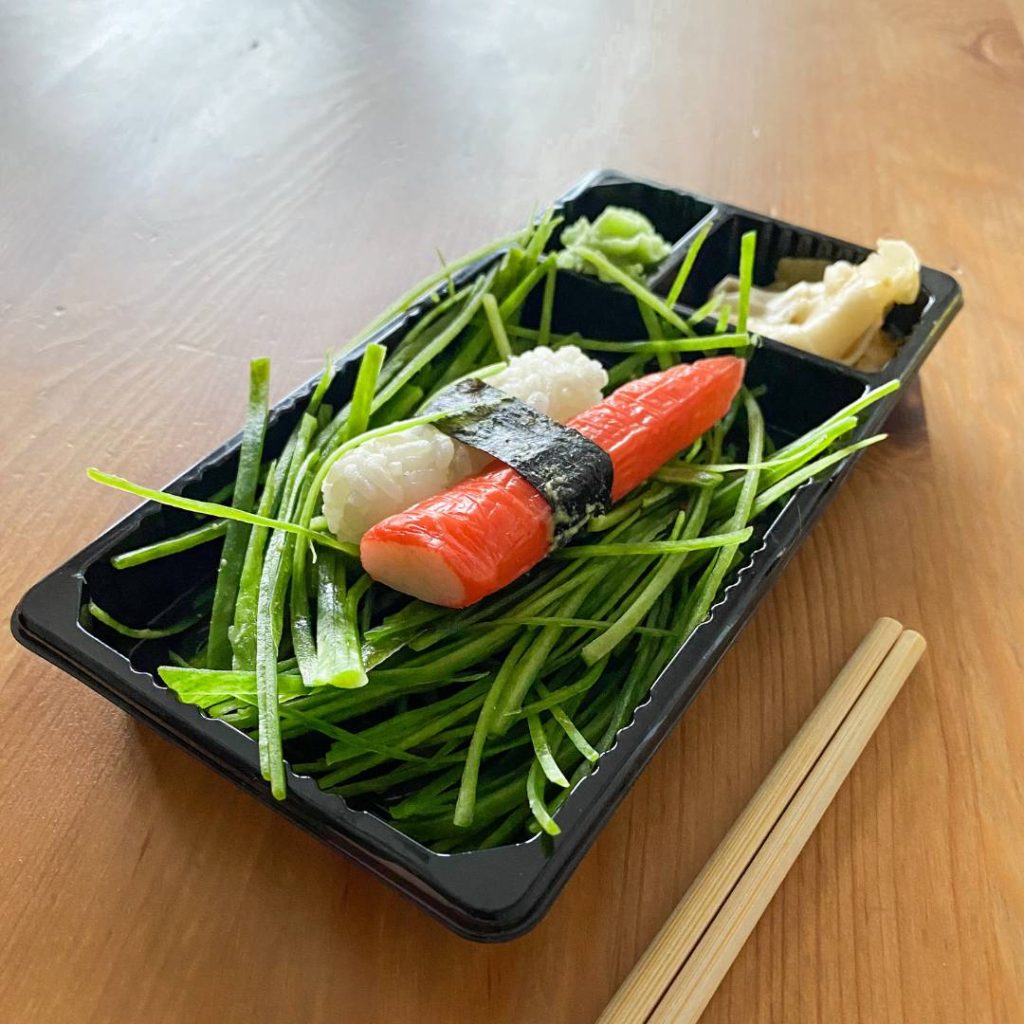
Types of Kani Sushi
Kani sushi is a popular Japanese dish that features crab meat as the main ingredient. There are several types of kani sushi that you can enjoy at sushi restaurants or make at home.
Kani Nigiri
Kani nigiri is a type of sushi that features a small ball of sushi rice topped with a slice of crab meat. The crab meat can be either fresh or cooked, and it is usually seasoned with a bit of soy sauce or wasabi. Kani nigiri is a simple and delicious way to enjoy the taste of crab in sushi.


Kani Maki
Kani maki is a sushi roll that features crab meat wrapped in nori (seaweed) and sushi rice. The crab meat can be combined with other ingredients, such as avocado, cucumber, or tempura flakes, to create a variety of different flavors and textures. Kani maki is a popular sushi roll that is enjoyed by many sushi lovers.
Kani Roll
Kani roll is a type of sushi roll that features crab meat as the main ingredient. The crab meat is combined with other ingredients, such as avocado, cucumber, and mayonnaise, to create a flavorful and creamy filling. The roll is then wrapped in nori and sushi rice and sliced into bite-sized pieces.
Spicy Crab Roll
Spicy crab roll is a sushi roll that features crab meat mixed with spicy mayo sauce. The roll is typically made with nori, sushi rice, and other ingredients such as avocado, cucumber, or tempura flakes. The spicy mayo sauce adds a kick of heat to the roll, making it a favorite among sushi lovers who enjoy a bit of spice in their food.
California Rolls
California rolls are a type of sushi roll that was first created in the United States. The roll features crab meat, avocado, and cucumber wrapped in nori and sushi rice. The roll is then typically sprinkled with sesame seeds and sliced into bite-sized pieces. California rolls are a popular sushi roll that is enjoyed by many people around the world.
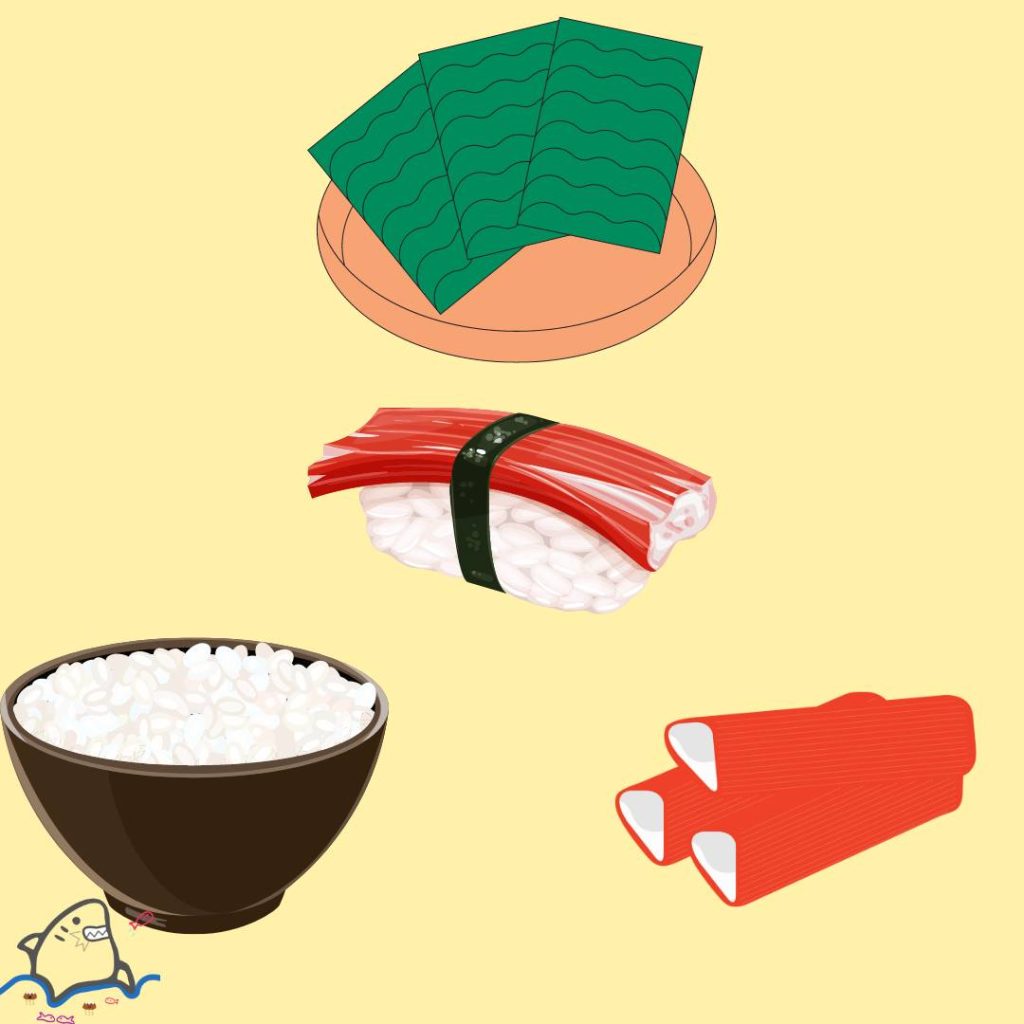
Ingredients of Kani Sushi
When it comes to making Kani Sushi, there are a few essential ingredients that you will need. These ingredients include sushi rice, nori seaweed, kanikama, crab sticks, kani sticks, and sauces. In this section, we will take a closer look at each of these ingredients and explore their role in creating the perfect Kani Sushi.
Sushi Rice
Sushi rice is a short-grain rice that is used to make sushi. It is the foundation of any sushi dish, including Kani Sushi. Sushi rice is cooked with a mixture of rice vinegar, sugar, and salt, which gives it a sweet and tangy flavor. The texture of sushi rice is sticky, which helps it hold together when rolled into sushi.
Nori Seaweed
Nori seaweed is a type of dried seaweed that is used to wrap sushi. It is thin and crispy, and it adds a slightly salty flavor to the dish. Nori seaweed is an essential ingredient in Kani Sushi, as it holds the rice and filling together.
Kanikama
Kanikama is a type of crab stick that is commonly used in sushi. It is made from surimi, a paste made from white fish and starch. Kanikama has a mild, slightly sweet flavor, and a firm, chewy texture. It is a popular ingredient in Kani Sushi, as it adds a seafood flavor to the dish.
Crab Sticks
Crab sticks are similar to Kanikama, but they are made from real crab meat. They have a delicate, sweet flavor, and a soft, flaky texture. While they are not as commonly used in Kani Sushi as Kanikama, they can be used as a substitute.
Kani Sticks
Kani sticks are another name for Kanikama. They are a popular ingredient in Kani Sushi, as they add a seafood flavor to the dish. Kani sticks are typically sliced into thin strips and mixed with other ingredients, such as avocado or cucumber.
Sauces
Sauces are an important part of Kani Sushi, as they add flavor and depth to the dish. Soy sauce, wasabi, and rice vinegar are commonly used in sushi, including Kani Sushi. Mayonnaise is also a popular sauce in Kani Sushi, and Japanese mayonnaise, such as Kewpie Mayo, is often used. Sriracha sauce can also be used to add a spicy kick to the dish.
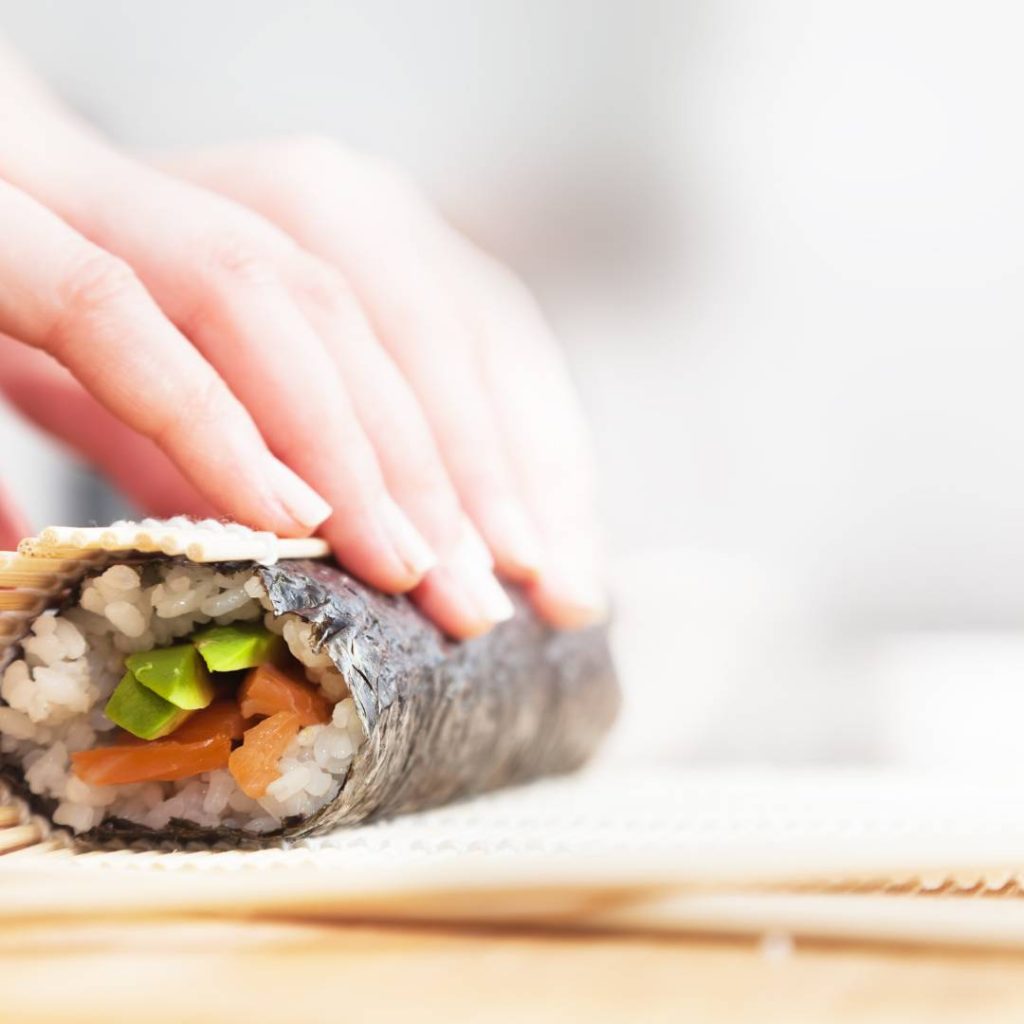
Preparation of Kani Sushi
Kani sushi is a popular sushi dish that features crab meat as its main ingredient. The preparation of Kani sushi is simple and requires attention to detail to make the perfect sushi. In this section, we will discuss the steps involved in preparing Kani sushi.


Rice Preparation
The first step in preparing Kani sushi is to prepare the rice. Short-grain rice is the best type of rice to use for sushi. Rinse the rice several times until the water runs clear. Then, add water and salt to the rice and cook it until it is tender. Once the rice is cooked, add seasoned rice vinegar and mix it well. Seasoned rice vinegar is a mixture of vinegar, salt, and sugar. It gives the rice a sweet and tangy flavor.
Rolling the Sushi
To roll the sushi, you will need a bamboo mat and nori seaweed sheets. Place the nori sheet on the bamboo mat and spread a layer of rice on top of the nori. Leave a small space at the top of the nori sheet. Add your choice of ingredients such as cucumber, avocado, mango, ginger, pickled ginger, shrimp, lobster, white fish, real crab meat, or cooked crab meat on top of the rice. Then, roll the sushi tightly using the bamboo mat. Seal the edges of the nori sheet with water.
Serving and Eating
Once the sushi is rolled, cut it into bite-sized pieces. You can serve Kani sushi with soy sauce, wasabi, pickled ginger, or other condiments. You can also sprinkle sesame seeds, tobiko, or masago on top of the sushi for added flavor and texture.
In conclusion, Kani sushi is a delicious and easy-to-make sushi dish that is perfect for sushi lovers who want to try something new. With the right ingredients and preparation, you can make Kani sushi at home.
Nutritional Value and Health Benefits
Despite not being actual crab meat, kani still provides some nutritional value. Here are some of the key nutrients found in kani:


- Protein: Kani is a good source of protein, with around 6 grams per 100-gram serving. Protein is important for building and repairing tissues in the body.
- Low in fat and cholesterol: Kani is low in fat and cholesterol, making it a good option for those watching their intake of these nutrients.
- Omega-3 fatty acids: Kani is a good source of omega-3 fatty acids, which are important for heart health and brain function.
In addition to these nutrients, kani also contains a variety of vitamins and minerals, including vitamin A, vitamin C, calcium, and iron.
While kani does offer some nutritional benefits, it is important to note that it is often high in sodium. One serving of kani can contain up to 400 milligrams of sodium, which is about 17% of the recommended daily intake. For this reason, it is important to consume kani in moderation and to be mindful of your overall sodium intake.

Understanding Imitation Crab
What is Imitation Crab
Imitation crab, also known as kamaboko or surimi, is a popular ingredient in sushi rolls, particularly in California rolls. However, it is not real crab meat. Instead, it is a processed paste made from various fish, starch, fillings, flavors, coloring, and sometimes other meat made to look like crab legs. Other additives include egg white, salt, and sugar.
How It’s Made
The main ingredient in imitation crab is usually Alaskan pollock, a type of white fish. The fish is filleted, deboned, and minced into a paste. Starch, such as wheat or corn, is added to bind the paste together. Then, flavorings and colorings are added to give the paste a crab-like taste and appearance. The paste is then shaped into crab legs or other shapes and cooked.
Comparison with Real Crab
Imitation crab is a processed food and is not as nutritious as real crab meat. Real crab meat is a good source of protein, vitamins, and minerals, while imitation crab meat contains mostly carbohydrates and sodium. Imitation crab meat is also often made with shellfish, which can be a problem for people with shellfish allergies.
However, imitation crab meat is a cheaper alternative to real crab meat and has a longer shelf life. It is also easier to work with, as it is already cooked and can be used straight out of the package. In addition, some people prefer the taste and texture of imitation crab meat over real crab meat.
Cultural Significance and Symbolism
Sushi is one of the most iconic dishes in Japanese cuisine, and its cultural significance cannot be overstated. Kani, or crab, is a popular ingredient in sushi and has its own symbolic meaning in Japanese culture. In Japanese folklore, the crab is considered a symbol of good luck and prosperity.
The color pink is also significant in Japanese culture and is often associated with cherry blossoms, which bloom in the spring and are a beloved symbol of renewal and new beginnings. Pink is also a common color for kani sushi, as it is often made with imitation crab meat that has been dyed pink to resemble real crab meat.
In Osaka, a bustling city in southeastern Japan, sushi is a popular food and is often served in small, bite-sized pieces called nigiri. Kani sushi is a common type of nigiri and is often served with a small dollop of wasabi and a slice of pickled ginger.
Sushi has also gained popularity in other parts of Southeast Asia, where it is often served in trendy sushi bars and restaurants. In these countries, sushi has become a symbol of sophistication and class, and is often associated with high-end dining and luxury.
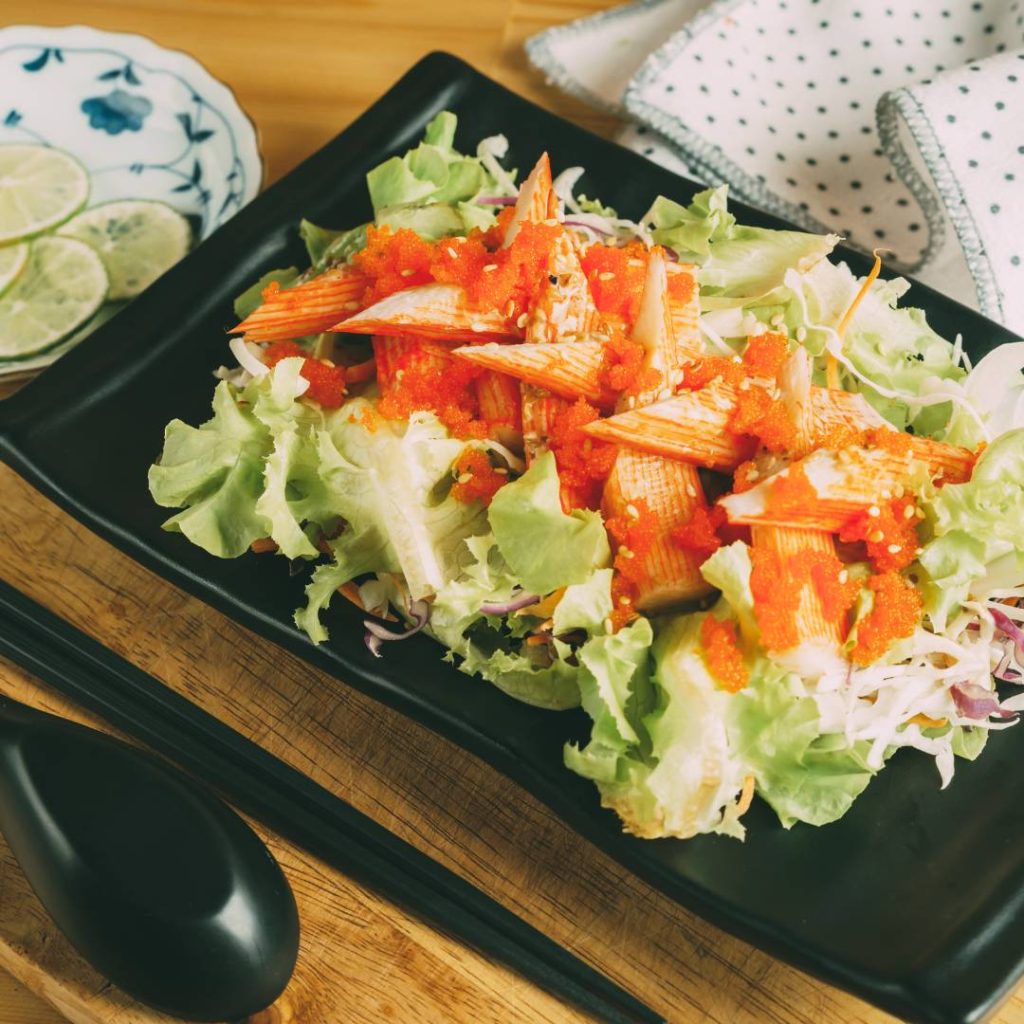
Common Variations of Kani Sushi
Kani sushi, also known as crab sushi, is a popular type of sushi that contains crab meat as its main ingredient. It is enjoyed by sushi enthusiasts worldwide and can be made in various ways. Here are some common variations of Kani sushi:
Spicy Kani Salad
Spicy Kani Salad is a delicious and refreshing salad that is made with imitation crab meat, cucumber, avocado, and spicy mayo dressing. The salad is usually served on a bed of lettuce and topped with sesame seeds. It is a perfect appetizer or side dish for any sushi meal.
To make Spicy Kani Salad, you can use imitation crab meat, which is made from surimi, a fish paste. You can also add other ingredients such as cream cheese, tobiko, or tempura flakes to give the salad more texture and flavor.
Kani Salad
Kani Salad is a classic Japanese salad that is made with imitation crab meat, cucumber, and mayonnaise dressing. The salad is usually served on a bed of lettuce and topped with masago or tobiko. It is a light and refreshing salad that is perfect for a hot summer day.
To make Kani Salad, you can use imitation crab meat or real crab meat, which is shredded and mixed with mayonnaise dressing. You can also add other ingredients such as avocado, mango, or edamame to give the salad more color and flavor.



Konnichiwa! (Hello!) I'm Pat Tokuyama, a Japanese tofu cookbook author, who travels for music, food, and adventure. If you like Japanese tea, checkout some of the newestorganic japanese tea, matcha bowls and noren and more!
** Curious about the Plant Based Japanese Cooking Club? ** Learn more here!
Temaki
Temaki, also known as hand rolls, are cone-shaped sushi rolls that are made with seaweed, sushi rice, and various fillings. Kani is a popular filling for Temaki, and it is usually combined with avocado, cucumber, or tobiko.
To make Kani Temaki, you can use imitation crab meat or real crab meat, which is mixed with mayonnaise dressing and other ingredients such as avocado or cucumber. The mixture is then wrapped in seaweed and sushi rice to form a cone-shaped roll.
Overall, Kani Sushi is a versatile dish that can be made in various ways. Whether you prefer Spicy Kani Salad, Kani Salad, or Temaki, there is a Kani dish for everyone.


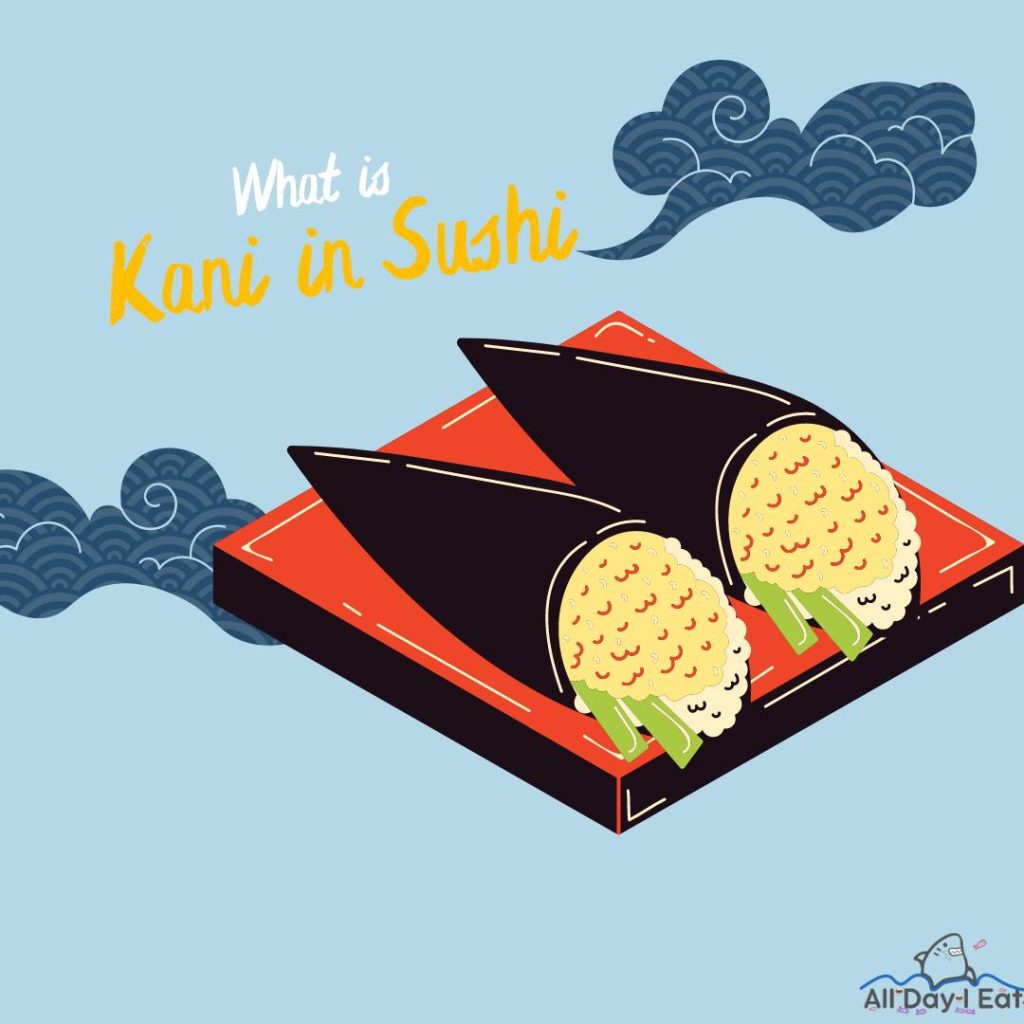








Konnichiwa! (Hello!) I'm Pat Tokuyama, a Japanese tofu cookbook author, who travels for music, food, and adventure. If you like Japanese tea, checkout some of the newestorganic japanese tea, matcha bowls and noren and more!
** Curious about the Plant Based Japanese Cooking Club? ** Learn more here!